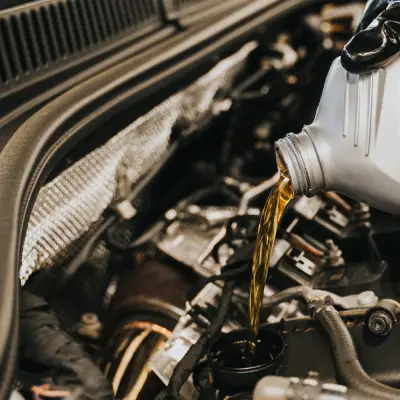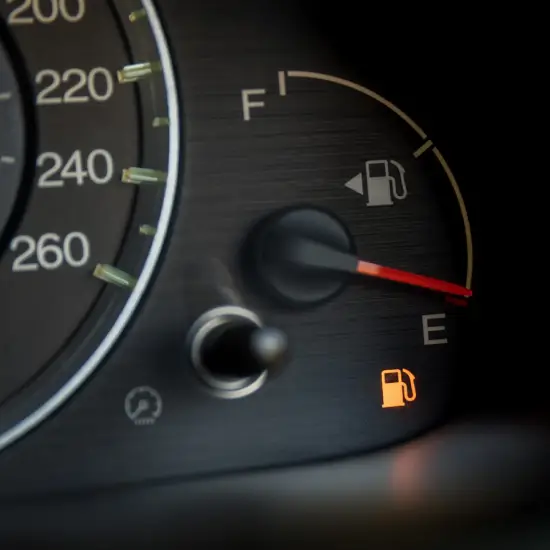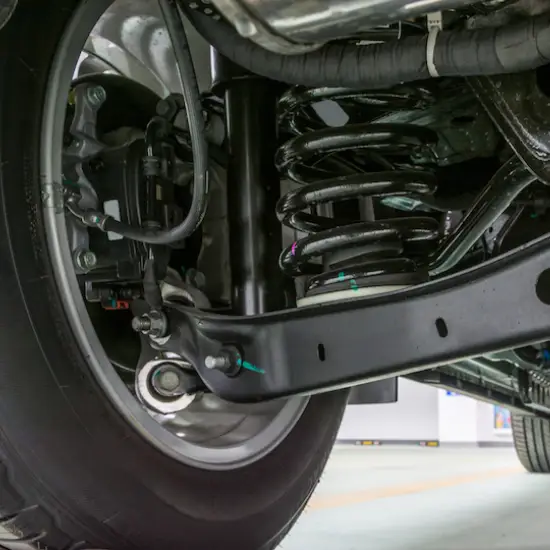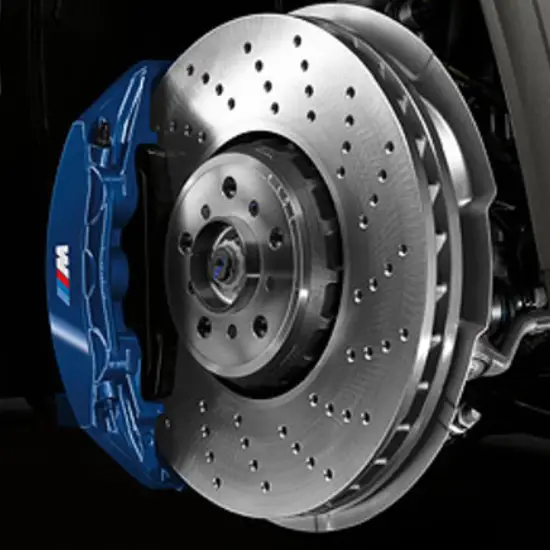Useful Tips
How to Keep Your Car in Good Running Condition
Maintaining your vehicle is crucial to preventing expensive mechanical repairs in the future. By learning key aspects of car maintenance, such as regular oil changes, tire rotations, and spark plug replacements, you can extend the lifespan of your vehicle and avoid potentially costly breakdowns. Taking proactive steps to care for your car can save you time and money in the long run, ensuring your vehicle remains reliable and safe to drive.
Here are Some Useful Tips from Our Specialists
We trust that you will find this information beneficial.

Change Your Oil NOT the Engine!
Why is it VERY Important to Change the Oil
Regular oil changes also remove contaminants and debris that can accumulate over time, preserving engine cleanliness and efficiency.
Engine oil serves as a lubricant, reducing friction between moving parts within the engine, which helps prevent wear and tear, overheating, and potential engine damage. Transmission oil provides lubrication for the transmission system, ensuring smooth gear shifts and preventing excessive friction and heat buildup that can lead to premature wear or transmission failure.
Choose the Right Oil Type:
Synthetic Oil: Synthetic oil offers better performance and durability, especially in extreme temperatures and high-stress conditions. It provides superior lubrication and engine protection compared to conventional oils.
Regular Oil: Conventional or regular oil is suitable for many vehicles and driving conditions. While it may be less expensive, it typically requires more frequent changes compared to synthetic oil.
Oil Change Intervals:
Synthetic Oil: Synthetic oil generally lasts longer than regular oil, often requiring oil changes every 7,500 to 10,000 kilometres or every 6 to 12 months, depending on the manufacturer’s recommendations and driving habits.
Regular Oil: Conventional oil usually needs to be changed more frequently, typically every 5,000 to 7,500 kilometres or every 3 to 6 months.
Consider Driving Style:
Aggressive Driving: If you frequently engage in stop-and-go traffic, towing heavy loads, or driving at high speeds, your engine and transmission undergo more stress. In such cases, opt for synthetic oil and consider shorter intervals between oil changes to maintain optimal performance and longevity.
Normal Driving: For regular commuting and moderate driving conditions, following the manufacturer’s recommended oil change intervals for synthetic or regular oil should suffice.
Follow Manufacturer
Recommendations:
Consult your vehicle’s owner’s manual or manufacturer guidelines for specific oil change intervals tailored to your car’s make, model, and engine type.
Some modern vehicles are equipped with oil life monitoring systems that analyze driving conditions and provide alerts when it’s time for an oil change.
Routine Maintenance:
Along with oil changes, regularly check the oil level and condition to ensure proper lubrication and engine health.
Don’t forget about the transmission fluid. Refer to your owner’s manual for recommended intervals for transmission fluid changes, which may vary depending on driving conditions and transmission type.
By following these tips and staying proactive with your vehicle’s maintenance schedule, you can help prolong the life of your engine and transmission, prevent costly repairs, and ensure smooth and reliable performance on the road.

Fluid Leak is More Than Just a Stain!
Maintain Correct Fluid Levels
Low fluid levels or leaks can lead to overheating, increased friction and wear, loss of control, brake failure, transmission damage, and even engine failure.
Each fluid plays a vital role in ensuring the proper functioning of various systems within the car, such as lubricating engine components, cooling the engine, transferring power in the transmission, aiding in braking, and facilitating smooth steering.
Regular Inspections:
Routinely inspect your vehicle for any signs of fluid leaks. Look for puddles or stains on the ground underneath the vehicle, as well as wet spots or drips on the engine or transmission components.
Identify Fluids:
Learn to distinguish between different types of fluids, such as engine oil, transmission fluid, coolant, brake fluid, power steering fluid, and windshield washer fluid. Each fluid has a distinct colour and viscosity.
Check Fluid Levels:
Refer to your vehicle’s owner’s manual for guidance on how to check fluid levels properly. Use the dipstick for engine oil, coolant reservoir for coolant, transmission dipstick for transmission fluid, and so on.
Top-Off Fluids:
Keep an eye on fluid levels and top them off as needed. Use the appropriate type of fluid specified by the manufacturer and avoid overfilling, especially with engine oil and coolant.
Address Leaks Promptly:
If you notice any fluid leaks, address them promptly to prevent further damage to your vehicle. Determine the source of the leak and have it repaired by a qualified mechanic as soon as possible.
Monitor Coolant Levels:
Check the coolant level regularly, especially before long trips or during hot weather. Low coolant levels can lead to engine overheating and potential damage.
Inspect Brake Fluid:
Check the brake fluid level and condition periodically. Low brake fluid levels can indicate a leak in the brake system, which should be addressed immediately to ensure safe braking.
Address Power Steering Leaks:
Keep an eye on power steering fluid levels and address any leaks promptly. Low power steering fluid can lead to difficulty steering and potential damage to the power steering system.
Monitor Transmission Fluid:
Check the transmission fluid level and condition regularly, as low fluid levels or contaminated fluid can cause transmission problems and lead to costly repairs.
Schedule Regular Maintenance:
Follow the manufacturer’s recommended maintenance schedule for fluid changes and inspections. Regular maintenance can help prevent fluid leaks and ensure proper fluid levels, extending the lifespan of your vehicle.
By following these tips and staying proactive with fluid maintenance, car owners can help prevent fluid leaks, maintain correct fluid levels, and ensure the longevity and reliability of their vehicles.

Stop Breaking Your Wallet,
Fix Your Car!
Learn How to Save
By keeping your car in good running condition you can save on gas and expansive repairs.
Keeping your car in good running condition is essential for maximizing fuel economy and overall efficiency. Here’s how maintaining your vehicle can positively impact fuel economy, along with some advice on how to achieve this:
Optimal Engine Performance:
Well-maintained engines operate more efficiently, leading to improved fuel economy. Regular tune-ups, including spark plug replacements, air filter changes, and fuel system cleanings, help ensure smooth engine operation and optimal fuel combustion.
Optimal engine performance is crucial for achieving maximum fuel economy and efficiency. Here are some key components and maintenance tasks related to engine performance:
Spark Plugs:
Spark plugs ignite the air-fuel mixture in the engine cylinders, initiating combustion. Worn or fouled spark plugs can lead to misfires, reduced power, and decreased fuel efficiency. Regularly inspect and replace spark plugs according to the manufacturer’s recommendations.
Air Filters:
The engine air filter prevents dirt, dust, and debris from entering the engine intake system. A dirty or clogged air filter restricts airflow to the engine, reducing combustion efficiency and fuel economy. Replace the air filter at regular intervals to ensure proper engine performance.
Fuel System:
The fuel system delivers fuel to the engine cylinders for combustion. Over time, fuel injectors can become clogged or dirty, affecting fuel spray patterns and combustion efficiency. Regularly use fuel system cleaners or additives to keep fuel injectors clean and optimize fuel delivery.
Ignition System:
The ignition system includes components such as ignition coils, distributor (if equipped), and ignition timing. Proper ignition timing ensures that the air-fuel mixture ignites at the correct moment for optimal combustion. Inspect and adjust ignition timing as needed to maintain engine performance and fuel efficiency.
Engine Oil:
Engine oil lubricates internal engine components, reducing friction and heat. Clean and high-quality engine oil is essential for maintaining optimal engine performance and fuel economy. Follow the manufacturer’s recommended oil change intervals and use the appropriate viscosity grade for your vehicle’s engine.
Engine Cooling System:
The engine cooling system regulates engine temperature to prevent overheating. An overheating engine can lead to decreased efficiency and potential damage. Maintain the cooling system by regularly checking coolant levels, flushing the system as recommended, and inspecting hoses and radiator for leaks or damage.
Emission Control Systems:
Modern vehicles are equipped with emission control systems such as catalytic converters, oxygen sensors, and exhaust gas recirculation (EGR) valves. These systems help reduce harmful emissions and ensure compliance with environmental regulations. Keep emission control components in good working condition to maintain engine efficiency and fuel economy.
By paying attention to these aspects of engine performance and conducting regular maintenance, car owners can ensure that their engines operate optimally, resulting in improved fuel economy, reduced emissions, and extended engine life. Regular maintenance and proper care are essential for achieving maximum efficiency and performance from your vehicle’s engine.
Proper Tire Maintenance:
Maintaining the correct tire pressure reduces rolling resistance and improves fuel efficiency. Check tire pressure regularly and inflate tires to the recommended level specified by the manufacturer. Additionally, rotate tires regularly to promote even wear and maximize fuel economy.
Smooth Transmission Operation:
Transmission issues, such as slipping gears or inefficient shifting, can decrease fuel economy. Ensure that your transmission fluid is clean and at the proper level, and address any transmission-related problems promptly to maintain smooth and efficient operation.
Aerodynamic Efficiency:
Keeping your vehicle’s exterior clean and free of unnecessary items reduces aerodynamic drag, improving fuel economy, especially at higher speeds. Remove roof racks or accessories when not in use, close windows at higher speeds, and avoid carrying bulky items on the exterior of the vehicle.
Efficient Driving Habits:
Driving habits play a significant role in fuel economy. Avoid aggressive driving behaviors such as rapid acceleration, excessive speeding, and sudden braking, as these actions waste fuel. Instead, practice smooth and steady driving techniques, anticipate traffic conditions, and maintain a consistent speed to maximize fuel efficiency.
Regular Maintenance:
Following the manufacturer’s recommended maintenance schedule is crucial for keeping your car in good running condition and optimizing fuel economy. Schedule regular oil changes, fluid checks, brake inspections, and other maintenance tasks to ensure that all components are functioning properly and efficiently.
Use High-Quality Fuel:
Using high-quality fuel can improve engine performance and fuel economy. Choose reputable gas stations that offer clean and properly filtered fuel, and consider using fuel additives to keep fuel injectors clean and maintain optimal combustion efficiency.
By incorporating these practices into your car maintenance routine, you can help maximize fuel economy, reduce fuel costs, and ensure that your vehicle operates efficiently for years to come. Regular maintenance and mindful driving habits are key to achieving optimal fuel efficiency and overall performance.

Do You Like it Rough?
Learn What Effects Quality of Your Ride
Signs of suspension problems include excessive bouncing, uneven tire wear, drifting or pulling to one side, and a harsh or bumpy ride.
Suspension System:
The suspension system is responsible for maintaining stability, handling, and comfort while driving. A worn or damaged suspension system can lead to poor handling, uneven tire wear, and compromised safety.
The suspension system of a vehicle is comprised of various components that work together to provide stability, handling, and ride comfort. Here are some key components of the suspension system along with common issues and symptoms when they go bad:
Shocks and Struts:
Shocks and struts are essential for controlling vehicle motion and damping vibrations. They absorb impacts from bumps and road imperfections, ensuring a smooth and comfortable ride.
Symptoms of worn shocks and struts include excessive bouncing or bouncing after hitting a bump, noticeable body roll during turns, nose-diving when braking, and uneven tire wear.
Springs:
Springs support the weight of the vehicle and absorb shocks from the road surface. They contribute to ride height and stability.
Symptoms of worn or broken springs include sagging or uneven ride height, bottoming out over bumps, and increased body roll during turns.
Control Arms and Bushings:
Control arms connect the suspension components to the vehicle’s frame or chassis, allowing for controlled movement. Bushings provide cushioning and flexibility within the control arms.
Symptoms of worn control arms and bushings include clunking or knocking noises when driving over bumps, excessive play or movement in the suspension, and uneven tire wear.
Ball Joints:
Ball joints connect the steering knuckles to the control arms, allowing for articulation and movement of the front wheels.
Symptoms of worn ball joints include clunking or popping noises when turning or going over bumps, steering wander or looseness, and uneven tire wear.
Sway Bar (Stabilizer Bar) and Links:
Sway bars reduce body roll during cornering by transferring forces between the left and right wheels. Sway bar links connect the sway bar to the control arms or struts.
Symptoms of worn sway bar components include excessive body roll during turns, squeaking or clunking noises when going over bumps, and a loose or disconnected sway bar.
Bushings and Mounts:
Various bushings and mounts throughout the suspension system provide cushioning and support, reducing noise, vibration, and harshness.
Symptoms of worn bushings and mounts include increased noise, vibration, or harshness (NVH) during driving, excessive play or movement in suspension components, and fluid leaks from hydraulic mounts.
It’s essential to address any symptoms of suspension issues promptly to ensure safe driving and prevent further damage to the vehicle. Regular inspection and maintenance of suspension components can help identify problems early and prevent costly repairs down the line. If you notice any unusual symptoms or changes in your vehicle’s handling or ride quality, it’s recommended to have the suspension system inspected by a qualified mechanic.
Maintenance Tips:
Regularly inspect suspension components such as shocks, struts, control arms, and bushings for signs of wear, damage, or leaks.
Replace worn or damaged suspension components promptly to maintain stability and handling.
Ensure proper wheel alignment and balancing to prevent premature tire wear and maintain steering responsiveness.

Rims & Tires
What to Know When Choosing
Rims and tires play a crucial role in vehicle stability, traction, and braking performance.
Tires:
Choosing the right tires for each season is essential for maintaining traction, handling, and safety in various driving conditions. Here are some factors to consider when selecting tires for different seasons while keeping budget constraints in mind:
Seasonal Tire Types:
Summer Tires: Designed for warm weather and dry road conditions, summer tires offer excellent traction and handling performance on hot pavement. They typically have a tread pattern optimized for dry grip but may lack traction in cold or wet conditions.
All-Season Tires: All-season tires are designed to provide good performance in a variety of weather conditions, including dry, wet, and light snow. They offer a balance of traction, comfort, and durability, making them suitable for year-round use in moderate climates.
Winter Tires: Winter tires are specifically engineered for cold temperatures, snow, and ice. They feature a unique tread pattern and rubber compound designed to provide superior traction and braking performance in winter conditions.
Budget-Friendly Options:
Entry-Level Brands: Look for reputable entry-level tire brands that offer good value for the money. These brands often provide reliable performance and durability at a lower price point compared to premium brands.
Tire Sales and Promotions:
Keep an eye out for sales, rebates, and promotions offered by tire retailers, especially during seasonal transitions. You may find discounted prices or special deals on quality tires that fit your budget.
Consider Tire Longevity:
While budget-friendly tires may have a lower upfront cost, it’s essential to consider their longevity and overall value over time. Investing in tires with a longer tread life can help offset initial costs by reducing the frequency of tire replacements.
Prioritize Safety and Performance:
While budget constraints are important, prioritize safety and performance when choosing tires. Opt for tires that provide adequate traction, handling, and braking performance in various road and weather conditions. Remember that tires are a critical safety component of your vehicle, and investing in quality tires can help prevent accidents and ensure peace of mind on the road.
Read Reviews and Ratings:
Before making a purchase, research tire brands and models online to read reviews and ratings from other consumers and automotive experts. Look for feedback on performance, durability, and overall satisfaction to help inform your decision.
Consider Tire Size and Specifications:
Ensure that the tires you choose meet the size and specifications recommended by your vehicle manufacturer. Choosing the correct tire size and load rating is essential for safety, handling, and compatibility with your vehicle’s suspension and braking systems.
By considering these factors and exploring budget-friendly options, you can select tires that provide the best balance of performance, safety, and value for each season. Remember to prioritize safety and invest in quality tires that meet your specific driving needs and budget constraints. If uncertain, consult with a tire professional or automotive technician for personalized recommendations based on your vehicle and driving habits.
Rims:
Aftermarket rims can have both positive and negative effects on a vehicle’s performance, handling, and aesthetics. Here’s a breakdown of the potential impacts of aftermarket rims and advice on how to differentiate between good and bad choices:
Effects of Bad Aftermarket Rims:
Weight: Poor-quality aftermarket rims may be heavier than stock rims, which can negatively impact vehicle acceleration, braking, and fuel efficiency.
Durability: Inferior materials and construction in bad aftermarket rims can lead to issues such as bending, cracking, or warping, especially under heavy loads or rough driving conditions.
Fitment: Ill-fitting aftermarket rims may cause clearance issues with brake components, suspension parts, or the vehicle’s body, leading to rubbing, scraping, or interference during driving.
Balancing: Low-quality rims may be difficult to balance properly, resulting in vibrations, steering wheel wobble, or uneven tire wear, even after tire balancing.
Corrosion: Inferior finishes and coatings on bad aftermarket rims can be prone to corrosion, rust, or peeling, compromising their appearance and structural integrity over time.
Effects of Good Aftermarket Rims:
Performance: High-quality aftermarket rims made from lightweight materials such as aluminum or alloy can enhance vehicle performance by reducing unsprung weight and improving handling, acceleration, and braking.
Aesthetics: Well-designed aftermarket rims can enhance the appearance of a vehicle, providing a custom, sporty, or aggressive look that complements the vehicle’s styling and personal taste.
Customization: Good aftermarket rims offer a wide range of sizes, styles, finishes, and colors, allowing for customization to match the vehicle’s aesthetics or individual preferences.
Fitment: Properly engineered aftermarket rims are designed to fit specific vehicle makes and models, ensuring proper clearance and compatibility with brake calipers, suspension components, and wheel wells.
Differentiating Between Good and Bad Choices of Aftermarket Rims:
Material Quality: Look for rims made from high-quality materials such as aluminum alloy, which offers a balance of strength, durability, and lightweight properties.
Construction: Check for proper construction techniques such as one-piece or forged construction, which provides strength and durability compared to cast or multi-piece rims.
Brand Reputation: Research reputable aftermarket rim brands known for producing high-quality, well-engineered products with good customer reviews and warranties.
Certifications: Look for aftermarket rims that meet industry standards and certifications, such as JWL, VIA, or TÜV, which ensure quality, safety, and performance.
Fitment and Compatibility: Choose rims that are specifically designed for your vehicle’s make, model, and year to ensure proper fitment, clearance, and compatibility with OEM components.
Price vs. Quality: While price is a consideration, prioritize quality and performance over low-cost options, as investing in good aftermarket rims can provide long-term benefits in terms of performance, durability, and aesthetics.
By considering these factors and conducting thorough research, car owners can make informed decisions when selecting aftermarket rims, ensuring they enhance their vehicle’s performance and appearance while maintaining safety and reliability. If uncertain, consulting with a knowledgeable automotive professional can provide valuable guidance in choosing the right aftermarket rims for your vehicle.

Stop in Your Tracks with Brakes that Never Slack!
All You Need to Know
If you are able to gain speed, you better be able to stop.
Maintaining the car brake system in good running condition is crucial for ensuring safety, reliability, and optimal stopping performance. Here’s why it’s important, along with the main components of the car brake system, potential problems, symptoms, and recommendations:
Importance of Maintaining the Car Brake System:
Safety: The brake system is responsible for slowing down or stopping the vehicle, making it a critical safety component. Properly maintained brakes ensure safe stopping distances and help prevent accidents.
Reliability: Regular brake maintenance helps ensure that the brake system functions reliably in all driving conditions, providing peace of mind for the driver and passengers.
Performance: Well-maintained brakes offer optimal braking performance, including responsiveness, stability, and control, contributing to overall driving confidence and comfort.
Main Components of the Car Brake System:
Brake Pads: Press against the brake rotors to generate friction and slow down the vehicle.
Brake Rotors (Discs): Rotating metal discs that the brake pads clamp onto to slow down or stop the vehicle.
Brake Calipers: House the brake pads and apply pressure to them, causing them to clamp onto the brake rotors.
Brake Lines: Transfer hydraulic brake fluid from the master cylinder to the brake calipers, enabling brake operation.
Master Cylinder: Generates hydraulic pressure in the brake lines when the brake pedal is depressed, activating the brake system.
Brake Fluid: Hydraulic fluid that transfers force from the brake pedal to the brake calipers, enabling braking action.
Brake Booster: Amplifies the force applied to the brake pedal, making braking easier and more efficient, especially in power-assisted brake systems.
Potential Problems, Symptoms, and Recommendations:
Worn Brake Pads:
Symptoms: Squealing or grinding noises when braking, longer stopping distances, reduced braking effectiveness.
Recommendations: Replace brake pads promptly to prevent damage to brake rotors and ensure safe braking performance.
Warped Brake Rotors:
Symptoms: Vibrations or pulsations felt through the brake pedal or steering wheel when braking, uneven braking, longer stopping distances.
Recommendations: Resurface or replace brake rotors as needed to restore smooth braking and prevent premature wear on brake pads.
Leaking Brake Fluid:
Symptoms: Low brake fluid level, soft or spongy brake pedal, brake warning light illuminated on the dashboard.
Recommendations: Inspect brake lines, calipers, and master cylinder for leaks, repair or replace damaged components, and flush and replace brake fluid to ensure proper brake operation.
Sticking Brake Calipers:
Symptoms: Vehicle pulls to one side during braking, uneven brake pad wear, overheating brakes.
Recommendations: Inspect and lubricate brake caliper slides or replace sticking calipers to ensure even braking and prevent premature brake wear.
Brake System Contamination:
Symptoms: Decreased braking performance, spongy brake pedal, fluid leaks, corrosion on brake components.
Recommendations: Regularly inspect brake components for signs of contamination from water, dirt, or debris, and clean or replace affected parts as necessary to maintain proper brake operation.
Brake Fluid Degradation:
Symptoms: Dark or discoloured brake fluid, spongy brake pedal, decreased braking performance.
Recommendations: Regularly flush and replace brake fluid according to the manufacturer’s recommended intervals to prevent fluid degradation and ensure optimal brake performance.
By addressing potential problems promptly and conducting regular brake inspections and maintenance, car owners can ensure that their brake system remains in good running condition, providing reliable and safe braking performance for the vehicle. If uncertain or inexperienced with brake system maintenance, it’s advisable to seek assistance from a qualified mechanic or automotive technician for professional inspection and repair.
